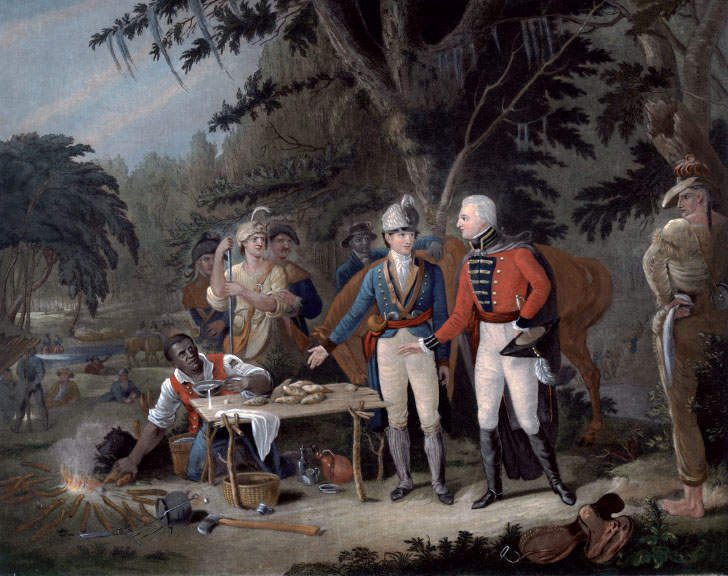Exploring American Histories: Printed Page 181
Exploring American Histories, Value Edition: Printed Page 157
An Uncertain Peace
The Continental Army had managed the impossible. It had defeated the British army and won the colonies’ independence. Yet even with the surrender at Yorktown, the war continued in fits and starts. Peace negotiations in Paris dragged on as French, Spanish, British, and American representatives sought to settle a host of issues. Meanwhile British forces challenged Continental troops in and around New York City even as American recruiters found it nearly impossible to find new enlistments.
Some Continental soldiers continued to fight, but others focused on the long-festering issue of overdue wages. When the congress decided in June 1783 to discharge the remaining troops without providing back pay, a near mutiny erupted in Pennsylvania. Nearly 300 soldiers marched on the congress in Philadelphia. Washington sent troops, including Deborah Sampson/Robert Shurtliff, to put down the mutiny, and bloodshed was avoided when the Pennsylvania soldiers agreed to accept half pay and certificates for the remainder. Despite this compromise, the issue of back pay would continue to plague the nation over the next decade.

Meanwhile patriot representatives in Paris—Benjamin Franklin, John Adams, and John Jay—continued to negotiate peace terms. Rising antiwar sentiment on the British home front, especially after the surrender at Yorktown, forced the government’s hand. But the Comte de Vergennes, the French foreign minister, opposed the Americans’ republican principles and refused to consider the American delegates as his political equals. Given the importance of the French to the American victory, the congress had instructed its delegates to defer to French wishes. This blocked the American representatives from signing a separate peace with the British.
Eventually, however, U.S. delegates finalized a treaty that secured substantial benefits for the young nation. The United States gained control of all lands south of Canada and north of Louisiana and Florida stretching to the Mississippi River. In addition, the treaty recognized the United States to be “free Sovereign and independent states.” Spain signed a separate treaty with Great Britain in which it regained control of Florida. Despite their role in the war, none of the Indian nations that occupied the lands under negotiation were consulted.
When the Treaty of Paris was finally signed on September 2, 1783, thousands of British troops and their supporters left the colonies for Canada, the West Indies, or England. British soldiers on the western frontier were supposed to be withdrawn at the same time, but they remained for many years and continued to foment hostilities between Indians in the region and U.S. settlers along the frontier.
The evacuation of the British also entailed the exodus of thousands of African Americans who had fought against the patriots. At the end of the war, British officials granted certificates of manumission to more than 1,300 men, 900 women, and 700 children. The largest number of these freed blacks settled in Nova Scotia, where they received small allotments of land from the British. Most, however, lacked the money, tools, or livestock to make such homesteads profitable. Despite these obstacles, some created a small Afro-Canadian community in Nova Scotia, while others migrated to areas considered more hospitable to black residents, such as Sierra Leone. Although thousands gained their freedom by taking up arms for the British, few were well rewarded for their efforts.
Explore
See Document 6.5 for a black loyalist’s petition to the British cabinet.